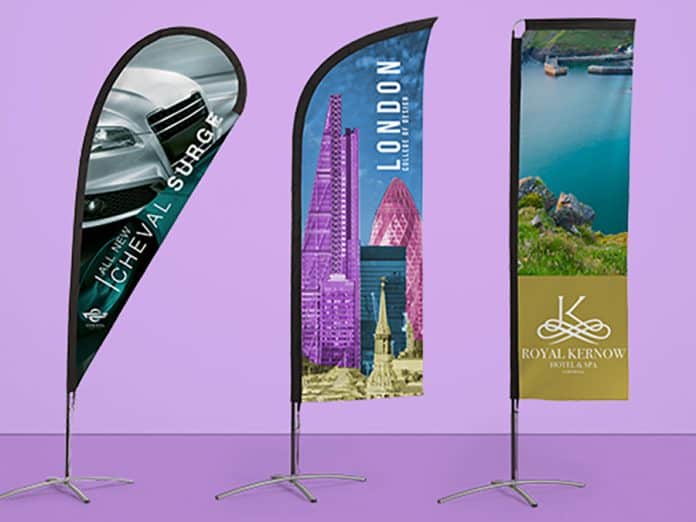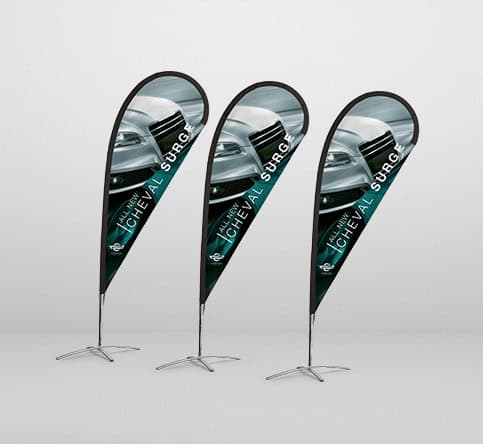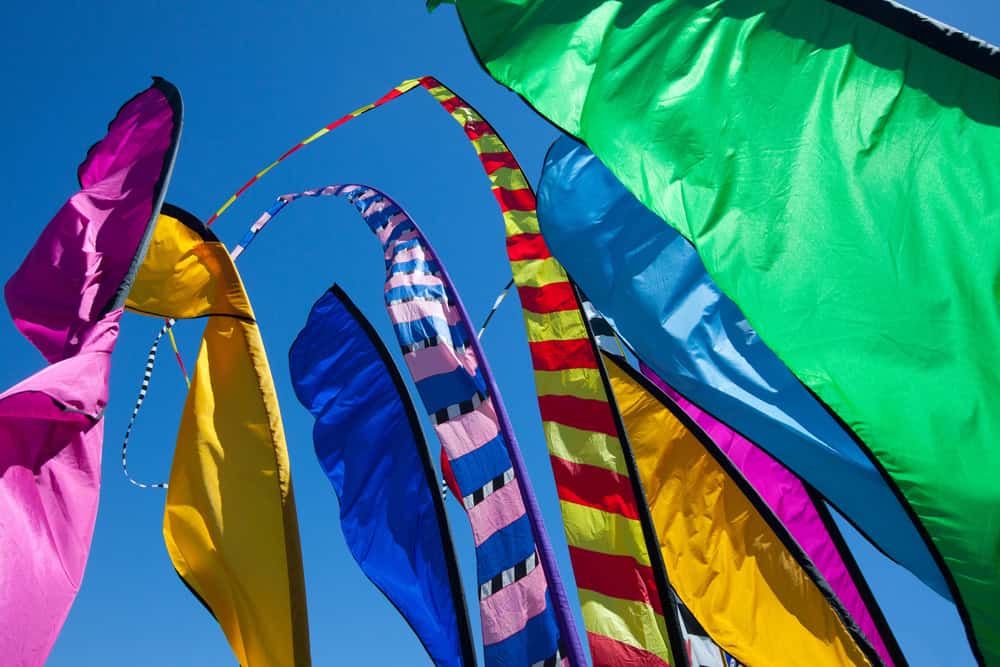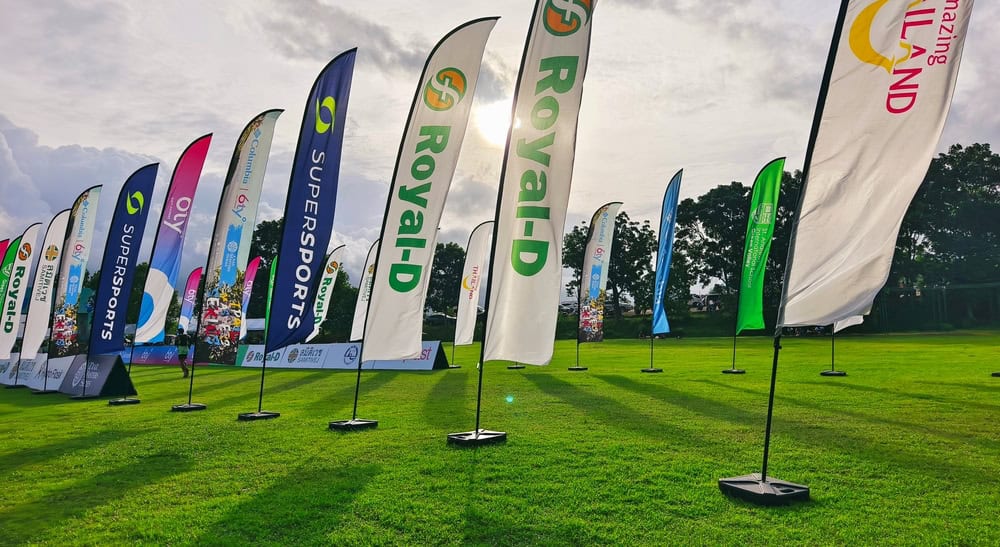Choosing the perfect flags for conferences and exhibitions is more than just picking colours and designs; it’s about making a statement that aligns with your brand and captures the attention of attendees. Printed Flags serve as powerful visual tools that can enhance the visibility of your stand, communicate your message effectively, and create a lasting impression. Whether you’re a seasoned event organiser or a business owner stepping into the world of conferences and exhibitions materials flags, for the first time, understanding the different types of flags, their uses, and their impact on your audience is crucial. In this guide, we’ll explore the key considerations and practical tips to help you select the most effective flags for your next event, ensuring they contribute positively to your overall exhibition strategy.
Understanding Flag Types
Traditional vs Modern Flags
When selecting flags for your event, it’s essential to weigh the pros and cons of traditional versus modern designs. Traditional flags often feature classic shapes and materials, such as rectangular banners made from durable fabrics like cotton or polyester. These flags can exude a sense of timelessness and reliability, appealing to audiences who appreciate tradition and heritage.
On the other hand, modern flags embrace innovative designs and materials. Sleek and dynamic shapes, such as teardrop or feather styles, can make your display stand out. These flags are typically crafted from lightweight, weather-resistant materials, making them easy to transport and set up. They offer a contemporary look that can resonate with a forward-thinking audience.
Ultimately, the choice between traditional and modern flags should align with your brand identity and match the message you wish to convey. Consider your audience’s preferences and the overall theme of the event to make an informed decision.
Custom vs Pre-Made Options
When deciding between custom and pre-made flags, consider the level of personalisation and convenience you require. Custom flags offer the advantage of tailoring every aspect, from design to size, ensuring the flag aligns perfectly with your brand identity. They allow you to incorporate specific logos, messages, and colour schemes, giving your display a unique touch that can make a lasting impression on attendees.
However, custom printed flags often require more time for production and can be more expensive compared to pre-made options. If you’re on a tight schedule or budget, pre-made flags present a practical alternative. These flags are readily available and come in a variety of designs and sizes, providing a hassle-free solution to enhance your exhibition stand quickly.
Ultimately, your choice event flag should reflect your event goals and branding needs. Custom flags are ideal for businesses looking to establish a strong brand presence, while pre-made options offer convenience and cost-effectiveness.
Material Matters
Fabric Choices for Durability
Selecting the right fabric is crucial for ensuring the longevity and durability of your flags. Polyester is a popular choice due to its lightweight nature and resistance to weather conditions, making it ideal for both indoor and outdoor events. It dries quickly and is less likely to fade, maintaining vibrant colours even after prolonged exposure to sunlight.
Another option is nylon, which shares similar properties with polyester. It is robust and resistant to tearing, making it suitable for flags that need to withstand wind and rain. Nylon flags often have a shiny finish, which can add an extra visual appeal.
For a more traditional look, cotton flags offer a classic aesthetic but may not be as durable in harsh weather. They are best suited for indoor events or festivals or short-term outdoor use.
When choosing a fabric, consider the environment where the flag or artwork will be displayed and the expected duration of use to ensure your investment stands the test of time.
Weather Resistance Considerations
When planning for an event, understanding the weather resistance of your flags is crucial, especially for outdoor exhibitions. Flags must be able to withstand varying weather conditions to remain effective throughout the event. Polyester and nylon are both excellent choices, offering resistance to wind and moisture. Their quick-drying capabilities ensure that even after rain, they maintain their appearance without sagging or becoming heavy.
However, it’s also important to consider the flag’s ability to resist UV rays. Prolonged sun exposure can cause colours and details to fade, diminishing the flag’s impact. Opt for fabrics that are treated with UV inhibitors to preserve vibrancy.
For areas prone to high winds, consider using reinforced stitching and strong flagpole attachments to prevent damage. It’s also wise to have backup plans, such as securing flags or bringing them indoors during severe weather, to extend their lifespan. These considerations will help maintain your flags’ functionality and appearance, regardless of weather challenges.
Design Essentials
Colours and Branding
The choice of colours on your flags plays a pivotal role in capturing attention and reinforcing your brand identity. Colours evoke emotions and associations, making them a powerful tool for conveying your brand message. When selecting colours, consider your existing brand palette to ensure consistency across all marketing materials. This uniformity helps in brand recognition and establishes a professional image.
Bright and contrasting colours can enhance visibility, making your stand noticeable from a distance. However, it’s crucial to balance vibrancy full colour with readability. Ensure that text and logos are easily legible against the background colours.
Incorporating brand colours into your flag design not only strengthens your visual identity but also creates a cohesive experience for attendees. It ties your exhibition stand together with other branded elements, such as brochures and printed business cards, enhancing the overall impact. Carefully consider how colour choices reflect your brand personality and the message you intend to communicate to your audience.
Text and Graphics
The integration of text and graphics on your flags is crucial for clear communication and visual impact. When designing your flag, prioritise simplicity and readability. Opt for concise messages that can be quickly understood at a glance. Choose fonts that are bold and legible from afar, avoiding overly decorative styles that might compromise readability.
Graphics, such as logos or icons, should be strategically placed to complement the text without overwhelming the design. Ensure that the graphics are high-resolution to maintain clarity when printed on a large scale.
Consider the scale and placement of both text and graphics to maximise visibility. Elements should be evenly spaced and balanced, allowing for a clean and professional appearance. Avoid clutter by focusing on key messages that align with your exhibition goals.
Effective use of text and graphics not only attracts attention but also reinforces your brand message, leaving a lasting impression on attendees. Aim for a harmonious design that conveys your core message succinctly and effectively.
Placement and Display
Indoor vs Outdoor Setup
Choosing the right setup for your flags depends on whether your event is indoors or outdoors. Indoor venues typically offer controlled conditions, allowing for lighter materials and more intricate designs. Flags can be positioned using portable stands or bases that are easy to manoeuvre and adjust as needed. Ensure the height and angle of your flags are optimal for visibility, taking into account the flow of foot traffic.
In contrast, outdoor setups require more robust materials to withstand the elements. Flags should be anchored securely to prevent movement due to wind. Consider using heavier bases or ground stakes for stability. Additionally, think about the backdrop and surrounding environment to maximise the visual impact of your display.
The location of your flags, whether inside or out, should facilitate interaction and engagement. Position them strategically near entry points or key areas to draw attendees toward your stand. Tailoring your setup to the venue ensures your flags perform effectively, enhancing brand visibility and your overall exhibition presence.
Maximising Visibility
To maximise the visibility of your flags at exhibitions and conferences, strategic placement is key. Position flags at eye level or slightly above to ensure they are seen by attendees from a distance. Consider the flow of foot traffic and place flags in high-visibility areas, such as near entrances, exits, or main corridors, where they can draw attention naturally.
Utilise height to your advantage, particularly in crowded spaces. Taller flags or those mounted on higher poles can rise above the crowd, making them visible from various points within the venue. Ensure the design is clear and legible from afar, with bold colours and straightforward messaging.
Lighting also plays a significant role in visibility. Ensure your flags are well-lit, especially in dimmer indoor environments, to highlight their presence. Proper illumination can enhance colours and make your branding stand out even more.
By considering these factors, you can effectively increase the visibility of your flags, ensuring they capture and hold the attention of visitors of your target audience.
Purchasing and Budgeting
Cost-Effective Solutions
Balancing quality and cost is crucial when purchasing flags for conferences and exhibitions. Start by evaluating your budget and identifying areas where you can economise without sacrificing impact. Pre-made flags are often more affordable and can be a practical choice if customisation is less of a priority. They offer a wide range of designs, allowing you to find a style that fits your needs without the added expense of bespoke options.
Another cost-effective approach is to invest in durable materials that will withstand multiple uses. While the initial cost may be higher, these flags provide long-term savings by reducing the need for frequent replacements.
Bulk purchasing can also lower costs, especially if you plan to attend multiple events. Look for suppliers who offer discounts on larger orders.
By carefully considering these strategies, you can secure high-quality trade flags that enhance your exhibition presence while staying within budget. Thoughtful planning ensures you make the most of your investment.
Supplier Selection Tips
Choosing the right supplier is essential to ensure you receive high-quality flags for conferences and exhibitions. Start by researching potential suppliers’ reputations through customer reviews and testimonials. This can provide insight into their reliability and the quality of their products.
Consider suppliers who offer a wide range of options, including both custom and pre-made flags. This flexibility allows you to choose solutions that best fit your team and specific requirements. It’s also beneficial to select suppliers who provide comprehensive customer support, from design assistance to after-sales service.
Request samples before making a bulk purchase to assess the material quality and printing precision first hand. Inquire about production and delivery timelines to ensure they align with your event schedule.
Finally, compare quotes from multiple suppliers to find competitive pricing without compromising on quality. By following these tips, you can make an informed decision and partner with a supplier who will deliver flags that enhance your conference and exhibition presence. With Printed Flags from Solopress, as with all of our products, you can save your quote online while you make sure you’ve found the best deal.









